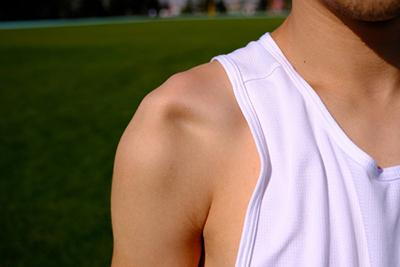Diagnosis and Treatment of Shoulder Dislocation

- posted: Aug. 24, 2023
A dislocation occurs when two bones become separated at the joint, this can result in the joint becoming temporarily immobilized and deformed. Dislocations can occur anywhere on the body where are connected by a joint, but the most common types are finger and shoulder dislocations. Complications can be severe for a shoulder dislocation if it is not treated in time, or improperly treated, so always turn to your local Paramus, NJ, shoulder doctor for help, Dr. Roger Pollock.
Diagnosis and Treatment
Our doctor will diagnose your shoulder with a physical examination and Xrays. Treatment usually simply involves gently sliding the joint back into place, with imaging tests before and after to determine the success and severity of your condition.
After the procedure, your shoulder joint may be stabilized with a sling and you will be prescribed medication to minimize the discomfort, as well as encouraged to rest so that the joint can heal.
Although nonoperative treatment is usually advised for first time dislocations, if necessary, our orthopedic shoulder specialist may recommend surgery to repair or reconstruct any damaged tissues, which can involve the use of arthroscopic as well as traditional surgery to restore your mobility and quality of life.
What Not to Do
It's very important to treat a shoulder dislocation as soon as possible, but do not try to reposition the joint on your own or have someone who is untrained attempt it, as this may result in fracture of the humerus, especially in older patients or nerve injuries.
Instead, try to limit the movement of the affected arm by wrapping it, and use over-the-counter medication to lessen the pain until you can get treatment.
Shoulder Dislocation Treatment in Paramus, NJ
Whether you've suffered from a past or recent shoulder dislocation be sure to schedule a consultation with our Paramus, NJ, shoulder specialist Dr. Pollock by dialing (201) 612-9774.
This website includes materials that are protected by copyright, or other proprietary rights. Transmission or reproduction of protected items beyond that allowed by fair use, as defined in the copyright laws, requires the written permission of the copyright owners.

